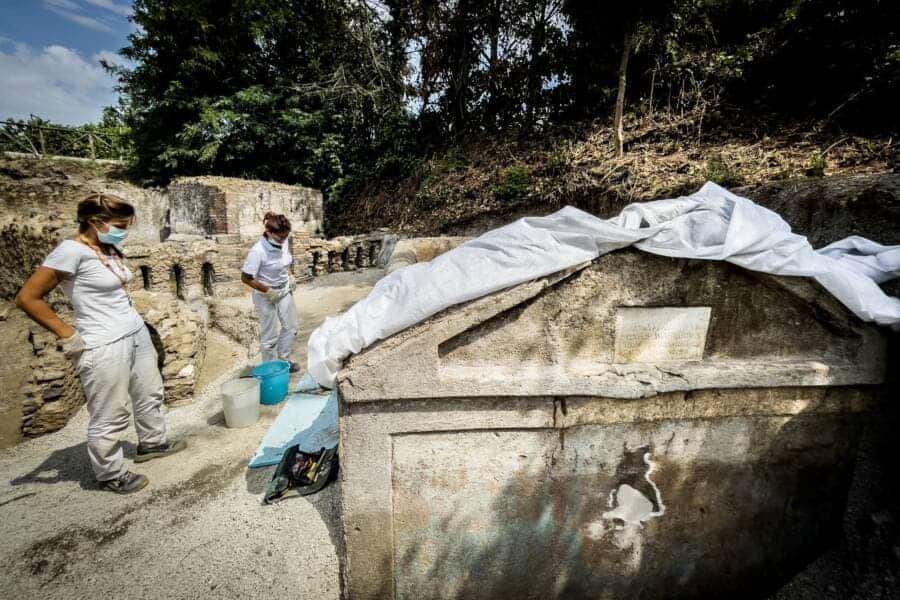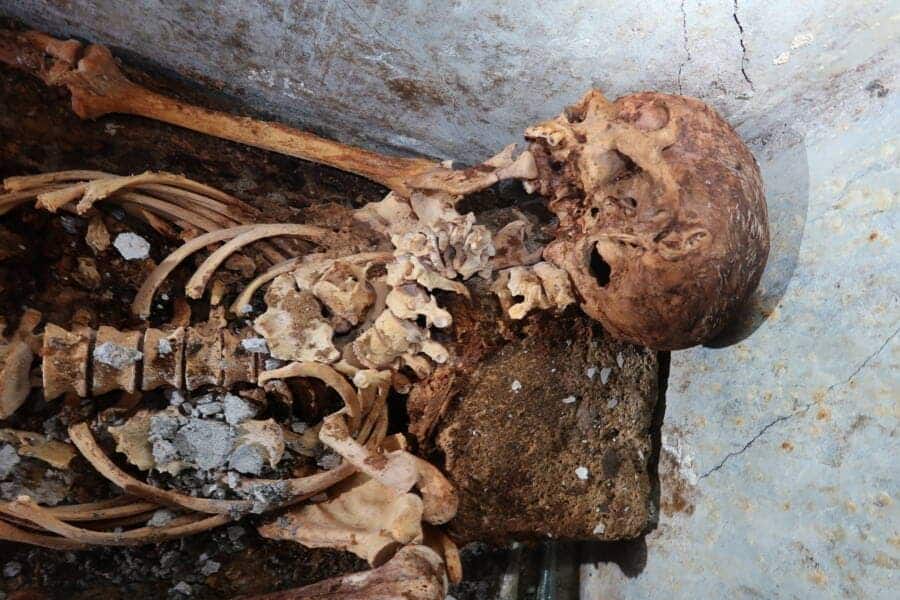
The Roman Empire was no stranger to rag to riches stories, despite the momentous inequality that plagued the realm. Take Marcus Venerius Secundio of Pompeii, for instance. The man was born a slave but managed to gain his freedom, then quickly climbed the social ladder, becoming a priest until he died at the ripe old age of 60. Now, almost two thousand years later, Italian archaeologists have excavated Secundio’s tomb and were stunned to find his were the best-preserved remains found in the once-great city of Pompeii thus far.
Pompeii was buried by the eruption of Mount Vesuvius in the year 79 AD. However, its terrible and harrowing undoing also ensured the city was preserved arguably like no other ancient settlement. Under the many layers of ash and pumice, archaeologists have unearthed remarkably well-preserved buildings, artworks, and frescos, as well as human remains, some of them gruesomely trapped in their death pose by the eruption’s hot ash.

Yet despite Pompeii being rediscovered in 1738, the site continues to impress and dazzle archaeologists. The tomb of Secundio, whose partially mummified remains are thought to be the most well-preserved found thus far, marks such an occasion.
Although it’s not clear when Secundio was buried, one thing’s certain: he died before the Vesuvius eruption. His final resting place was uncovered at the Porta Sarno necropolis, close to one of the main entrance gates into the city.
His partially mummified remains, including white hair, bones, and even an ear, amazed the researchers from the European University of Valencia and the Archaeological Park of Pompeii – a lucky find considering the Roman custom was to cremate the dead.
The fact that Secundio, who was part of a college of priests known as the Augustales, was found buried is indicative of his high social status. Secundio “may well have had himself buried and even embalmed with the precise intention of preserving his body from the moisture of the grave,” Llorenç Alapont, an archaeologist at Valencia University, told ANSA.

“The tomb at the Sarno gate is really an extraordinary discovery because of all the information it can give us, a unique burial for that era in Pompeii, and it may in some ways also change our knowledge on the rules of death rites in the Roman world,” Alapont added.

That’s not all. A marble slab found on top of the tomb not only contains information about Seuncdio’s life but also makes reference to theatre performances in Pompeii that were conducted in Greek. This is the first evidence that Pompeii hosted performances in the Greek language and is a testament to the cosmopolitan nature of the great fallen city. Archaeologists also found a glass bottle inscribed with the name of a woman, Novia Amabilis, who might have been Secundio’s wife.
“It’s an extremely interesting testimony, which must be linked to the others that we have of the presence of Greeks and above all Greek culture in Pompeii,” Former Pompeii director Massimo Osanna said in a statement, who added that Greek culture was “all the rage in Pompeii.”


